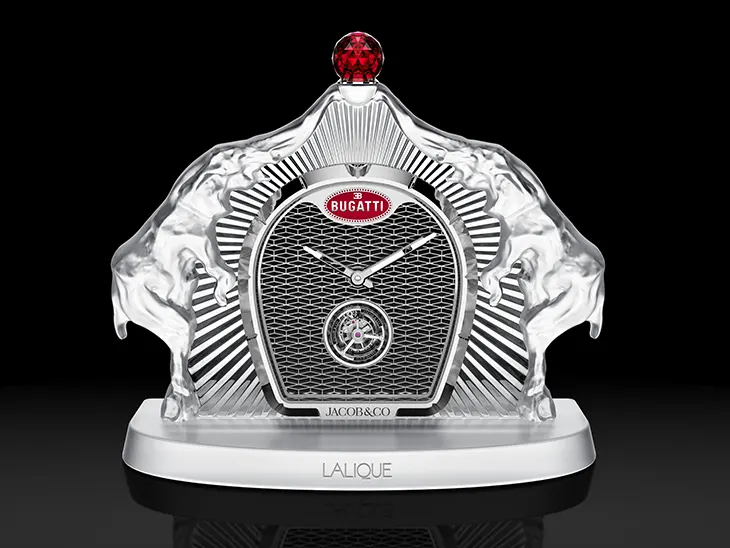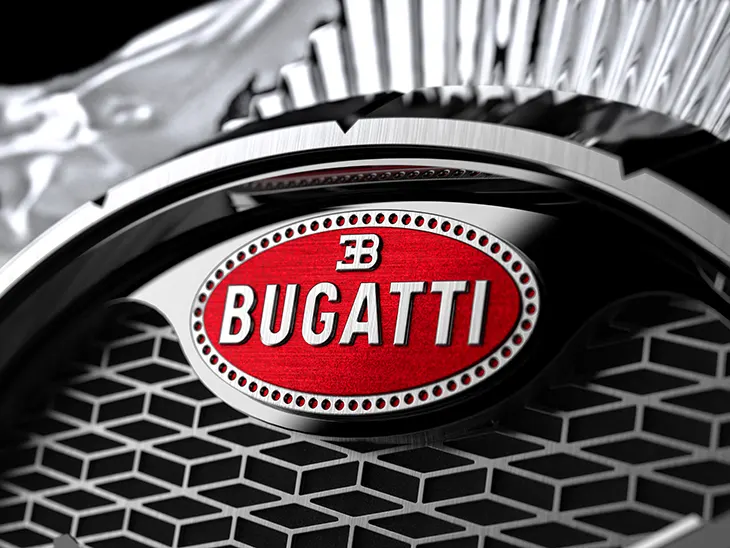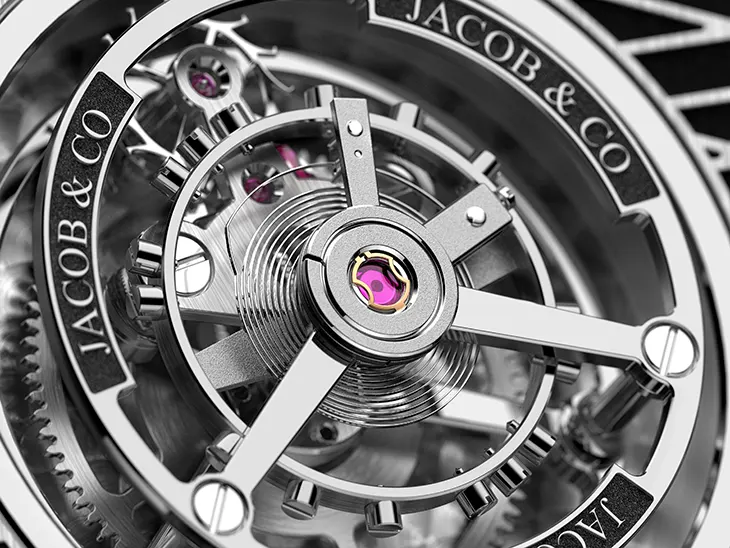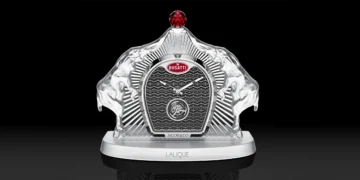
Jacob & Co. has partnered once again with Bugatti, this time expanding their horological vision with an exceptional creation, the Bugatti Calandre Table Clock. Designed in collaboration with Lalique, this limited-edition timepiece marks a new format for the three brands, combining automotive design, precision mechanics, and sculptural artistry.
WATCHES
The design draws heavily from Bugatti’s past, with references layered into every component. Central to the concept is the Bugatti Type 41 Royale, a historic model known for its grandeur. Two crystal Dancing Elephants lean toward one another, sculpted in tribute to Rembrandt Bugatti, brother of Ettore Bugatti, and reimagined here through the lens of Lalique’s artisanal crystalwork. These mirrored elephants echo a visual language often found in Lalique clocks and early 20th-century design.
The name “Calandre,” meaning radiator grille in French, directly points to Bugatti’s signature horseshoe grille. Jacob & Co. frames the timekeeping elements behind this motif, with the iconic Bugatti Macaron logo sitting just above. The vertical grille also serves a functional purpose, it conceals the new flying tourbillon movement, nodding to the recently introduced Bugatti Tourbillon hypercar.
Jacob & Co. developed a new caliber specifically for the Bugatti Calandre. The JCAM58 features a one-minute vertical flying tourbillon, an arrangement that directly ties back to the origins of the complication, which aimed to increase accuracy in stationary vertical clocks. The manually wound movement offers an eight-day power reserve and sits at the core of the design. Owners can wind and set the clock via a custom key inserted into the caseback, preserving the sculptural surface.

Topping the clock is a 30-mm red gemstone, cut in Jacob & Co.’s patented Jacob Cut. Shaped with 288 facets, the gem gives a nearly round silhouette with intense internal light. Its hue echoes the deep red of the Bugatti Macaron emblem, bringing together the horological and automotive themes with a dramatic centerpiece.
Lalique’s role in the project goes far beyond aesthetics. The brand produced the molded crystal case in its historic Wingen-sur-Moder workshop, operating since 1922. The process begins by pouring molten crystal into a steel mold, where it hardens into shape. Each component then undergoes months of refinement. Artisans sculpt, polish, and frost the surface to achieve a finish that reacts dynamically with light. The sculpted elephants, in particular, showcase the play of clarity and shadow, giving the piece both visual complexity and precision.
The project gains depth through the shared history of its collaborators. René Lalique, known for both jewelry and glasswork, once created clocks and car mascots that echoed the same design principles found in the Calandre. Jacob Arabo, founder of Jacob & Co., also began his career in jewelry, a detail that ties both creators across time.

René Lalique and Ettore Bugatti each chose to base their workshops in Alsace, just 45 kilometers apart, tapping into the technical skills of the region. They even co-owned a venue called Clos Sainte Odile, an upscale space that would later become a Michelin-starred restaurant. These historical connections anchor the clock in a shared cultural and creative context.
Jacob & Co. released only 99 pieces of the Bugatti Calandre Table Clock, each priced at $240,000. Each piece came housed in a custom tan leather trunk inspired by Bugatti’s automotive interiors.



















